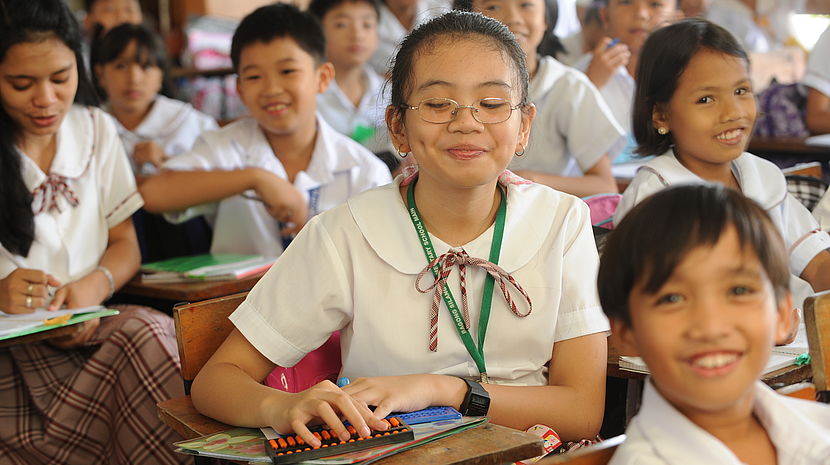18.04.2016 Many lessons learnt a year since the Nepal Earthquake

As I walked through the tiny entrance of a narrow but towering structure housing one-room homes in Madhyapur Thimi, a municipality in Bhaktapur District, I was hit by the vision of what it would have been like trying to escape through the a narrow and creaky wooden stairway when the Nepal Earthquake 2015 struck around noon on a balmy Saturday.
I brushed aside my anxiety and began groping in the dark for support though it was around noon; the bright sun outside offered a strange contrast to darkness in the building. Over the next week or so the question kept troubling me as the people we met talked about those who were left behind.
I was getting back after interviewing one of the survivors who are rebuilding their lives through the CBM and partners’ emergency response. For some of these partners, this was their first foray into emergency response, but they have great experience working on disability and development, so the projects extend smoothly into building community level capacity. I had been traveling to document what has changed as we approached the first anniversary of the Nepal Earthquake that killed over 8,000 people and injured more than 21,000.
An earthquake quake that ended the quiet
Sipping tea in the idyllic setting of the campus of the Hospital and Rehabilitation Center for Disabled Children, Dr. Bikash Man Singh underlined quite literally with his finger on a neat table top that the focus in now on preparedness and to map most at risk sections of the community, especially people with disabilities, and build capacity of the health staff and community workers.
“The earthquake has taught us a difficult but a much-needed lesson of planning and working together, not just when a disaster happens, but all through… as one cannot see it just as a project… it’s an approach,” he said.
CBM has been working in the region specifically with medical and health institutions that play a critical role in the chain of events that follow when disasters strike.
Nepal has a vocal disability sector and a national level network of disability organisations that give advocacy teeth when it comes to national level policies. The earthquake has driven home the need for disability rights organisations to embrace the approach of disability-inclusive disaster risk reduction (DRR).
“We were all left shocked by the earthquake and deeply concerned about the impact it had on people with disabilities. The questions kept coming, on how will they reach the camps, medical centres, relief distribution… including issues like the accessibility of communication and response infrastructure being created,” said Manish Prasai, Administrative Manager, National Federation of the Disabled, Nepal.
Manish has been a bold voice in Nepal’s disability sector and with CBM’s support, he has started steering the network to influence the national policy conversations on rebuilding and long-term planning around resilience.
“I don’t think people have forgotten the earthquake and its lessons… even the children who are barely at the age when they can speak talk about the disaster,” said Punyashori Suwal, an emergency response coordinator for the CBM support project with HRDC.
On the way back to Kathmandu city, we watched long queues of vehicles lined up for fuel that is still scarce with its distribution being regulated.
Punyashori talked about the experience of chaos that followed the earthquake with relief response not being well coordinated in the first few weeks. “We have learnt to appreciate the importance of coordination the hard way,” she said.
Stepping out of the longest two minutes
Everyone remembers where he or she was when the ground started shaking for close to two minutes. It felt like an eternity that changed things forever. When these stories are recounted one can see how their personal and collective memory has been impacted and reshaped by the disaster.
Even today wooden beams are seen holding the walls of buildings and historical structures in Madhyapur Thimi, one of the ancient, cultural and historical places along the trade route from Bhaktapur to Kathmandu.
This reminded me of the lingering impact it continues to have on survivors who have been receiving mental health support and psychosocial counselling from a CBM-supported project with partner KOSHISH, a respected and pioneering group working on mental health issues in Nepal.
“It is important to not let go of the realisation about the importance of trauma management and psychosocial care in disaster and the post-emergency response,” said Leela Khanal, Program development officer with CBM’s emergency response project. I was witness to how psychosocial trauma can leave not just individuals – like Hari, who is recovering now – but whole families isolated in society.
As we approach the anniversary of the April 2015 Nepal earthquake one can clearly see that the scars remain but so do the lessons learnt. What’s important is that there are more answers than questions.